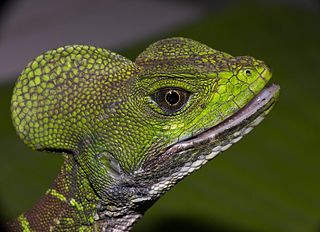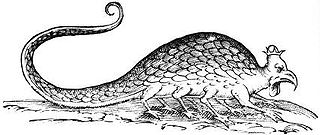
Year 476 (CDLXXVI) was a leap year starting on Thursday of the Julian calendar. At the time, it was known as the Year of the Consulship of Basiliscus and Armatus. The denomination 476 for this year has been used since the early medieval period, when the Anno Domini calendar era became the prevalent method in Europe for naming years.

Flavius Zeno was Eastern Roman emperor from 474 to 475 and again from 476 to 491. Domestic revolts and religious dissension plagued his reign, which nevertheless succeeded to some extent in foreign issues. His reign saw the end of the Western Roman Empire following the deposition of Romulus Augustus and the death of Julius Nepos, but he was credited with contributing much to stabilising the Eastern Empire.

Flavius Basiliscus was Eastern Roman emperor from 475 to 476. A member of the House of Leo, he came to power when Emperor Zeno was forced out of Constantinople by a revolt.

Leo II, nicknamed "the Younger" or "the Small", was briefly Roman emperor in 474 when he was a child aged six or seven. He was the son of Zeno, the Isaurian general and future emperor, and Ariadne, a daughter of the emperor Leo I, who ruled the eastern Roman empire. Leo II was made co-emperor with his grandfather Leo I on 17 November 473, and became sole emperor on 18 January 474 after Leo I died of dysentery. His father Zeno was made co-emperor by the Byzantine Senate on 29 January and they co-ruled for a short time before Leo II died ten months later.

Corytophanidae is a family of iguanian lizards, also called casquehead lizards or helmeted lizards, endemic to the New World. Nine species of casquehead lizards from three genera are recognized.

Basiliscus is a genus of large corytophanid lizards, commonly known as basilisks, which are endemic to southern Mexico, Central America, and northern South America. The genus contains four species, which are commonly known as the Jesus Christ lizard, or simply the Jesus lizard, due to their ability to run across water for significant distances before sinking due to the large surface area of their feet.

The plumed basilisk, also called commonly the green basilisk, the double crested basilisk, or the Jesus Christ lizard, is a species of lizard in the family Corytophanidae. The species is native to Central America.
Jesus Lizard may refer to:

The brown basilisk, also commonly referred to as the striped basilisk or in some areas as the common basilisk, is a species of basilisk lizard in the family Corytophanidae. The species is native to Mexico, Central America and adjacent northwestern Colombia, and has been introduced into the U.S. state of Florida as a feral species. The brown basilisk has large hind feet with narrow flaps of skin on the distal edge of each toe. The fact that they move quickly across the water gives them the appearance of "walking on water".

The common basilisk is a species of lizard in the family Corytophanidae. The species is endemic to Central America and South America, where it is found near rivers and streams in rainforests. It is also known as the Jesus Christ lizard, Jesus lizard, South American Jesus lizard, or lagarto de Jesus Cristo for its ability to run on the surface of water.
A basilisk is a legendary reptile reputed to be king of serpents.

The Leonid dynasty produced five Roman emperors during Late Antiquity, reigning over the Roman Empire from 457 to 518. The dynasty's patriarch was Leo I, who was made Roman emperor in 457. Leo's daughter Ariadne became empress and mother to an emperor, and her two husbands were themselves each made emperor in turn. Another relative whose name does not survive of Leo I or his wife Verina married the future augustus Julius Nepos, the last emperor in the western Roman Empire. The dynasty of Leo succeeded the preceding Valentinianic dynasty and Theodosian dynasty whose family trees were conjoined and ruled concurrently. Besides Julius Nepos, who administered no more than a rump state the Roman province of Dalmatia in the western empire during the fall of the west, the dynasty's emperors governed the eastern empire.
Flavius Armatus, also known as Harmatius, was a Byzantine military commander, magister militum under Emperors Leo I, Basiliscus and Zeno, and consul. He was instrumental in the rebellion of Basiliscus against Zeno, and in his subsequent fall.

Aelia Ariadne was Eastern Roman empress as the wife of Zeno and Anastasius I. She is venerated as a saint in the Eastern Orthodox Church, with her feast day falling on August 22.
Aelia Zenonis was Eastern Roman empress as the wife of Basiliscus. Her ancestry is unknown.

The western basilisk, or red-headed basilisk, is a large species of lizard in the family Corytophanidae. The species is endemic to northwestern South America.

In European bestiaries and legends, a basilisk is a legendary reptile reputed to be a serpent king, who can cause death with a single glance. According to the Naturalis Historia of Pliny the Elder, the basilisk of Cyrene is a small snake, "being not more than twelve fingers in length", that is so venomous, it leaves a wide trail of deadly venom in its wake, and its gaze is likewise lethal.

Marcus was the son of the East Roman or Byzantine general and usurper Basiliscus, and Zenonis. He was acclaimed Caesar in 475 and later promoted to Augustus, ruling as junior co-emperor to his father. When Zeno reoccupied Constantinople in late August 476, Marcus, with his parents, took refuge in a church. Zeno promised not to spill their blood, so he exiled them to Limnae in Cappadocia and subsequently starved them to death.
Basiliscus was the only son of the East Roman (Byzantine) military commander Armatus and briefly caesar of the East Roman Empire in 476–477/8. In later life, he became a priest and finally bishop of Cyzicus.











